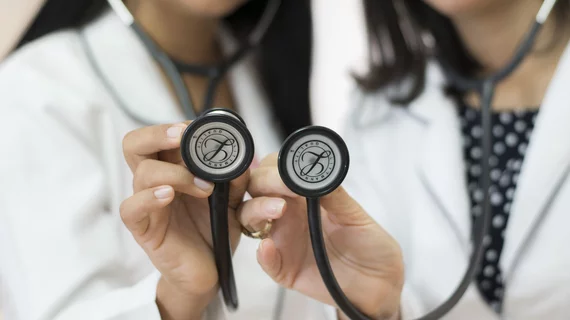Could 2020 be the year of women in cardiology?
A number of female cardiologists are leading, or preparing to lead, top cardiology organizations this year. Could 2020 mean a paradigm shift for the field?
Women have been underrepresented in cardiology—and medicine as a whole—for decades, comprising just 12.6% of cardiologists in 2016. A JAMA Cardiology study published last September revealed that, though 42.6% of internal medicine residents are now women, they wind up accounting for just 21.5% of general cardiology fellows, 9.8% of interventional cardiology fellows and 13.7% of electrophysiology fellows. Study lead Laxmi S. Mehta, MD, and colleagues said the notable increase in racial and ethnic diversity in the U.S. over the past several decades hasn’t been mirrored in medicine.
The American College of Cardiology, which last year elected Athena Poppas, MD, as its vice president, addressed the sex gap last fall, issuing its first-ever health policy statement on cardiology compensation and opportunity equality on Sept. 16. The 17-point document emphasizes parity in the field of cardiology, noting the annual salary gap between male and female cardiologists can total more than $1 million over the course of a career.
Speaking in a release from Cedars-Sinai, Christine Albert, MD, MPH, founding chair of the Department of Cardiology at the Smidt Heart Institute at Cedars-Sinai and current president-elect of the Heart Rhythm Society, said cardiology “has always lagged behind” when it comes to diversity. She joins a handful of other female powerhouses that will assume leadership roles this year.
“It is fantastic to see a group of women rise to this level,” she said. “Ten years ago, it would have been unheard of to witness multiple female leaders simultaneously serving in these top-ranked positions.”
Other women hand-picked for leadership positions include Judy Hung, MD, president-elect of the American Society of Echocardiography; Maully Shah, MD, president of the Pediatric and Congenital Electrophysiology Society; Sharmila Dorbala, MD, MPH, president of the American Society of Nuclear Cardiology; Andrea Russo, MD, outgoing president of the HRS; and Barbara Casadei, MD, president of the European Society of Cardiology.
“These female-occupied roles are certainly a change in medicine,” Hung, the director of echocardiography at Massachusetts General Hospital and a professor at Harvard Medical School, said in a statement. “Cardiology remains predominantly male, but female leaders, role models and mentors are on the rise.”

